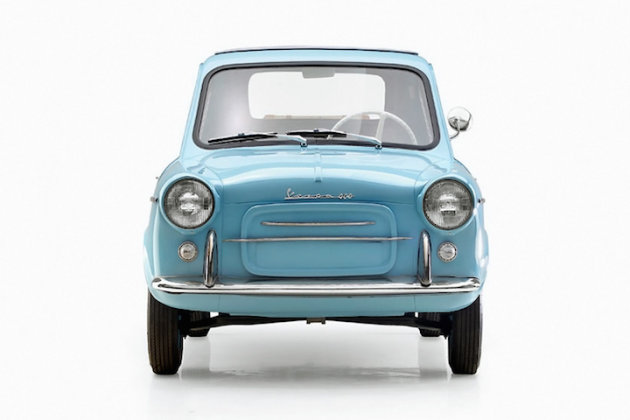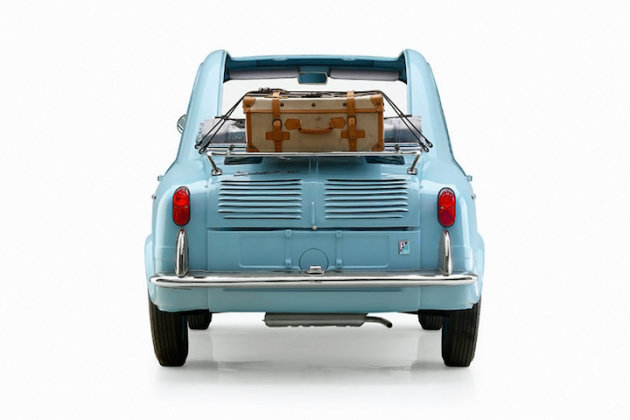YAHOO AUTOS

When we think of Vespas, we think of the iconic scooters and the well-dressed Italian guys who ride them. Few, however, are aware that Vespa (Italian for wasp) also built an automobile that was just as cute, but far less successful than its two-wheeled cousin.
Piaggio, the makers of Vespa, debuted the 400 microcar in Monaco in 1957. It received an enthusiastic response with over 12,000 sold in its first year thanks to attractive styling, room for luggage or two children behind the front seats, and other practical considerations like suicide doors for easy entry and the pull-out battery tray in between the headlights that made for easy service.

The 393 cc engine mounted in the back made 12-14 horsepower and scooted the Vespa 400 to 40 miles per hour (0-60 wasn’t really possible) in about 23 seconds. Although that kind of performance was pretty bleak, it wasn’t what led to the demise of Vespa’s only serious four-wheeled attempt.
The 400 was a charming little thing, but even by microcar standards it just wasn’t a good automobile. The windows didn’t open on early cars, the gear change of the three-speed manual was fairly poor, and the fuel economy was less than ideal for a car that makes a Mini look like a lifted Hummer. The engine, in true bike fashion, was also a two-stroke, meaning that oil had to be added at every fuel stop.

Despite price reductions and later equipment to address the 400′s practical shortcomings, sales continued to fall and the Vespa 400 only lasted four short years. There were plenty of other choices in the microcar market and they were just, well, better.
After making about 34,000 400s, Vespa gave up the car business and concentrated on the scooters. With almost 70 years of production, millions of bikes on the road and production facilities around the world, we’d say it was a solid choice.


No comments:
Post a Comment